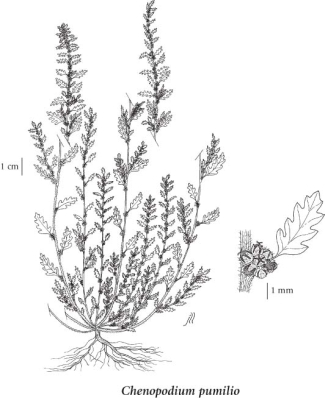E-Flora BC: Electronic Atlas of the Flora of British Columbia
Dysphania pumilio (R. Br.) Mosyakin & Clemants
Australian goosefoot (clammy goosefoot) Amaranthaceae (Amaranth family) (Previously in Chenopodiaceae) Introduction to Vascular Plants
|
||||||||||||||||
